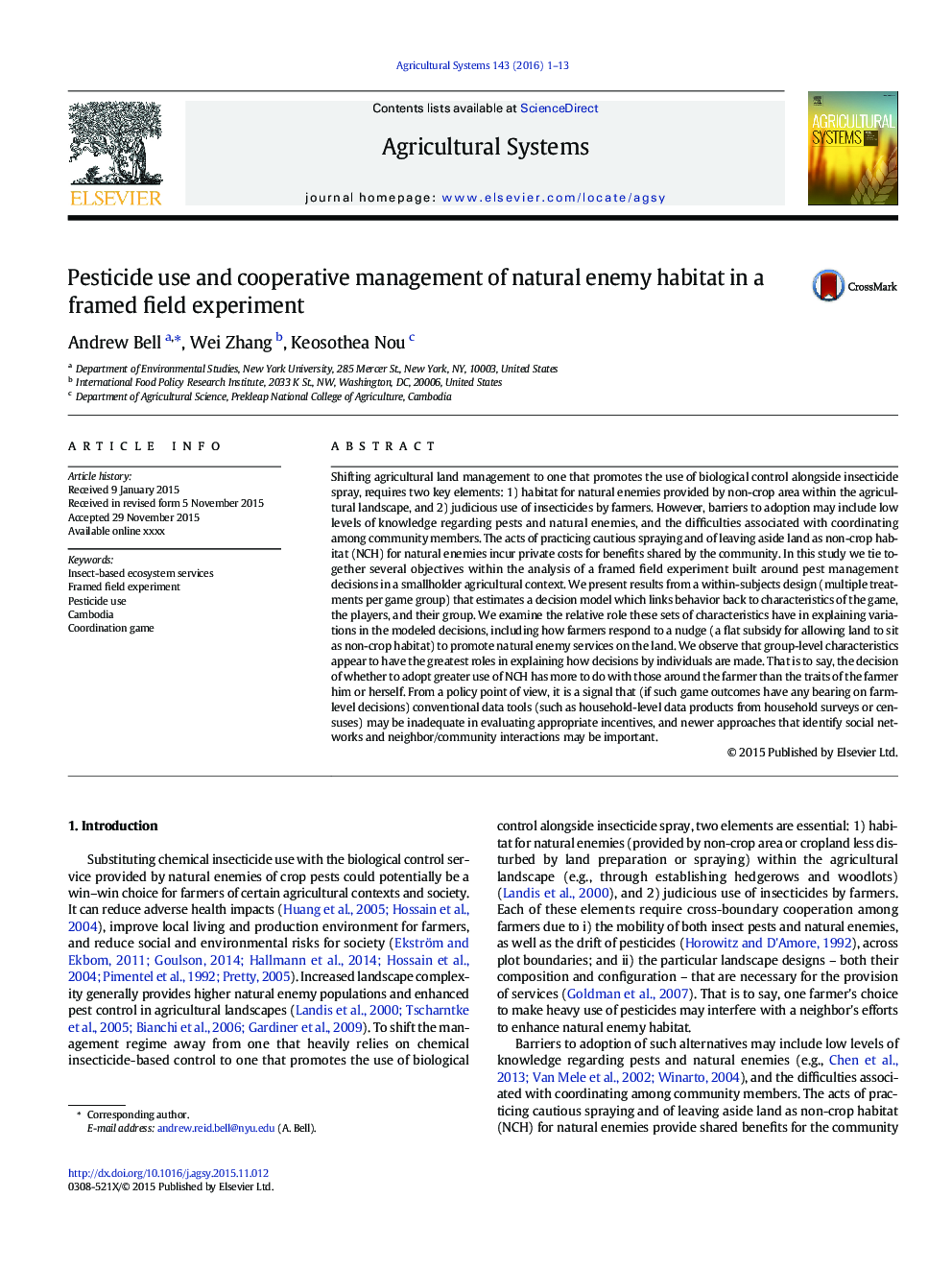| Article ID | Journal | Published Year | Pages | File Type |
|---|---|---|---|---|
| 6368324 | Agricultural Systems | 2016 | 13 Pages |
Abstract
Shifting agricultural land management to one that promotes the use of biological control alongside insecticide spray, requires two key elements: 1) habitat for natural enemies provided by non-crop area within the agricultural landscape, and 2) judicious use of insecticides by farmers. However, barriers to adoption may include low levels of knowledge regarding pests and natural enemies, and the difficulties associated with coordinating among community members. The acts of practicing cautious spraying and of leaving aside land as non-crop habitat (NCH) for natural enemies incur private costs for benefits shared by the community. In this study we tie together several objectives within the analysis of a framed field experiment built around pest management decisions in a smallholder agricultural context. We present results from a within-subjects design (multiple treatments per game group) that estimates a decision model which links behavior back to characteristics of the game, the players, and their group. We examine the relative role these sets of characteristics have in explaining variations in the modeled decisions, including how farmers respond to a nudge (a flat subsidy for allowing land to sit as non-crop habitat) to promote natural enemy services on the land. We observe that group-level characteristics appear to have the greatest roles in explaining how decisions by individuals are made. That is to say, the decision of whether to adopt greater use of NCH has more to do with those around the farmer than the traits of the farmer him or herself. From a policy point of view, it is a signal that (if such game outcomes have any bearing on farm-level decisions) conventional data tools (such as household-level data products from household surveys or censuses) may be inadequate in evaluating appropriate incentives, and newer approaches that identify social networks and neighbor/community interactions may be important.
Related Topics
Life Sciences
Agricultural and Biological Sciences
Agricultural and Biological Sciences (General)
Authors
Andrew Bell, Wei Zhang, Keosothea Nou,
